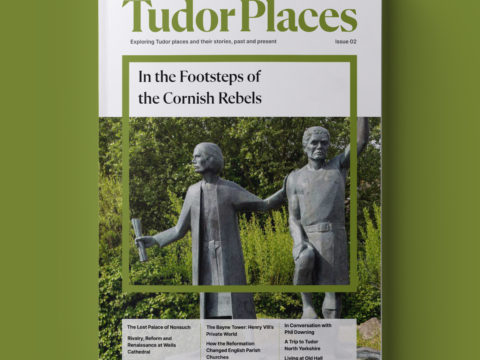Mary, Queen of France: Life Story
Chapter 10 : The Return
A torrent of letters was poured out from Mary and Suffolk to Henry, and to Cardinal Wolsey, pleading for the latter to act as intermediary between them and Henry. Erin Sadleck, in her article Mary the French Queen and the politics of letter-writing, postulates that Mary’s letters were stylised, that they drew upon well-established epistolary forms, and that they should not necessarily be read entirely at face value.
As a well-educated princess, Mary knew the forms and structures of letter-writing as a political act. In particular, the repeated descriptions of Henry as her ‘good lord and brother’, emphasised their relationship, and the right she had to expect him to support her. Letters were, by and large, public matters, often read aloud and handed to different readers. Mary could be sure that her letters to Henry were read not just by him, but certainly by Wolsey, and probably by others. She need to express herself in a way that was humble, yet would constrain Henry to grant her wishes.
Mary’s frequent repetition, not just of herself as her brother’s ‘true servant’ but also as ‘Marie, Queen of France’, Sadleck believes, was done intentionally to remind Henry that she had obeyed his wishes in marrying Louis, but now deserved respect and recognition herself.
Mary further appealed to Henry’s desire to seem all-powerful by suggesting that he intended to keep his promise to her that she might marry as she chose, but that he was being undermined by his councillors – it was on them that she laid the blame for any suggestion she should marry another prince. Henry was thus cast in the role of loving brother and merciful king, protecting her from his encroaching council.
Many of Mary’s drafts were submitted to Wolsey, who set himself out to gain Henry’s forgiveness for her and Suffolk. In general, he amended her work to make her seem more humble, and to make it clear that Suffolk should not be blamed.
Mary also sent many of her jewels to England, including the Mirror of Naples – undoubtedly a theft from the French crown.
François, and Queen Claude, Mary’s step-daughter, were furious at the loss of the jewels that should have been delivered to Claude, but despite years of protestation and argument, the bulk of them remained with Henry. The long-term fate of the Mirror of Naples is unknown. This action over the jewels meant that the arguments over Mary’s dower as queen of France were protracted and vexatious. Her original marriage articles had provided for a dower as great as that which Anne of Brittany had been promised, and, since Mary was only just nineteen, the French crown might have to pay her for another forty years – a serious drain on resources.
It was the size of Mary’s dower, that, in part, mollified Henry. He agreed that she and Suffolk could return to England, and that Suffolk would not suffer for the marriage, but the couple would have to repay the dowry she had taken to France and give Henry a large proportion of her dower from France. Mary enacted a deed on 9th March, granting Henry all the plate and vessels of ‘clean gold’ that King Louis had given her, as well as his choice of her jewellery.
It was during this period in Spring 1515, when Mary and Suffolk waited to learn their fate, that the well-known double portrait of them was probably painted. The history and symbolism of the painting has been explored in detail by Celia Fisher in The Queen and the Artichoke: A Study of the Portraits of Mary Tudor and Charles Brandon. Fisher dates the painting to this period, and attributes it to Perréal. The presence of the artichoke, still almost unknown in England, gives it a likely French provenance.
It may have been a marriage portrait – the couple went through another ceremony in Paris, in the presence of the King, around 30th March, but, so far as François knew, Henry was still in ignorance of the matter. No doubt he enjoyed the idea that he had encouraged Henry’s own sister to secretly defy him.
By April, the couple were in Calais, preparing to sail home. This time, there were no delays or storms, and Mary returned to Dover unscathed. Thence she proceeded to Barking where Henry awaited her arrival.
To wash away any stain arising from a clandestine marriage, particularly as it had occurred in Lent, during which time marriages are not supposed to be solemnised, and no banns had been read, a third ceremony was arranged at Greenwich. This duly took place on 13th May, in the presence of Henry, Katharine and the English court.
Hall records that there were many who ‘grudged’ the match, believing the betrothal to Archduke Charles should have been revived. He himself, ever an ardent supporter of Henry VIII, pointed out that the result of Mary remaining in England, was an influx of French money each year – although the reality over time was that her dower was often in arrears.
Mary, Queen of France
Family Tree


